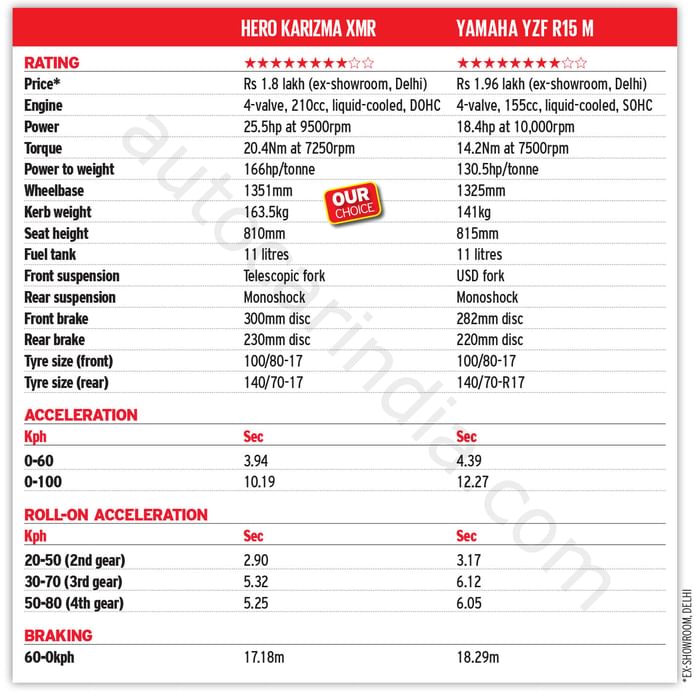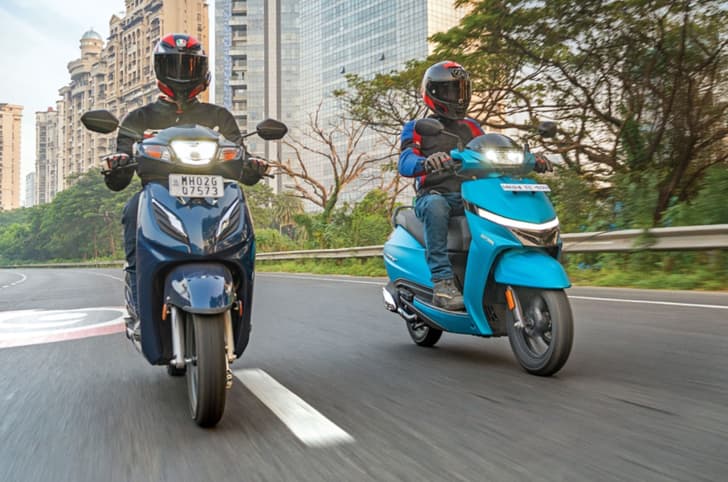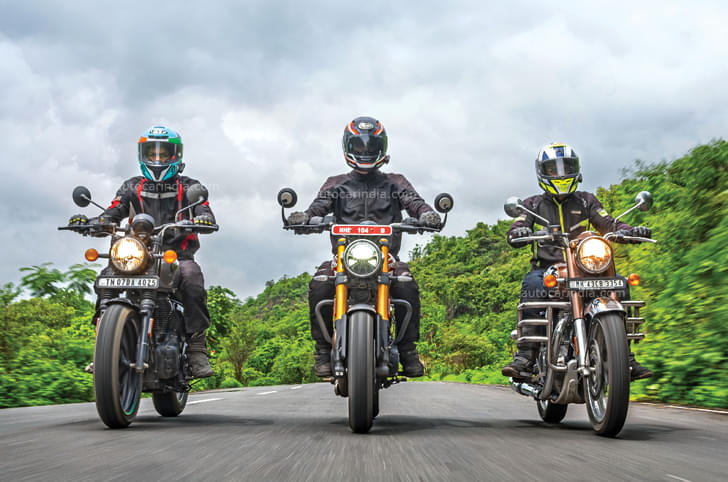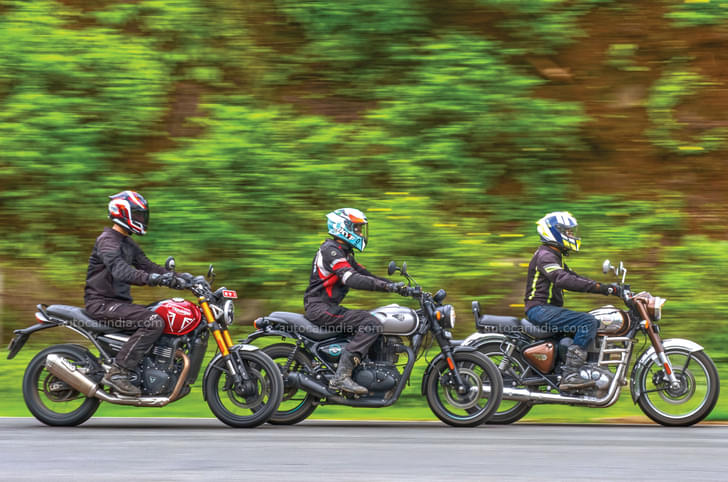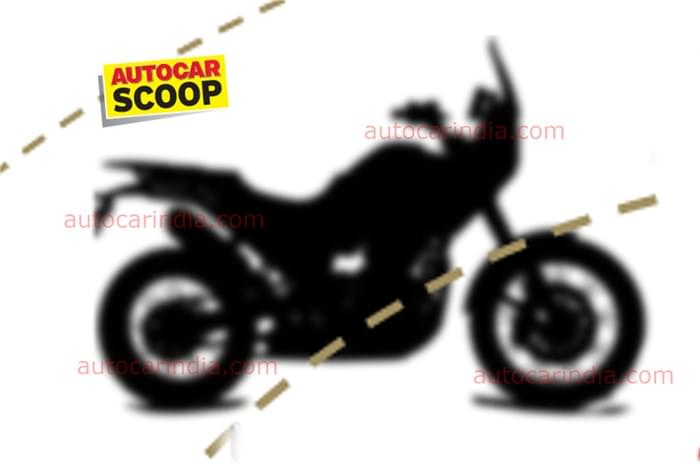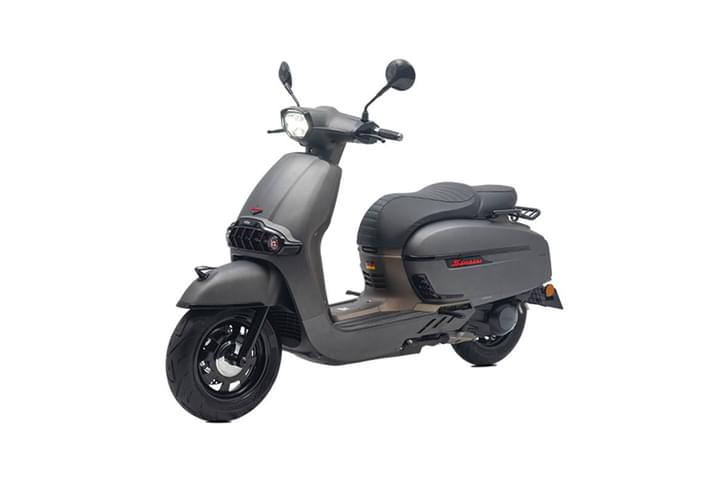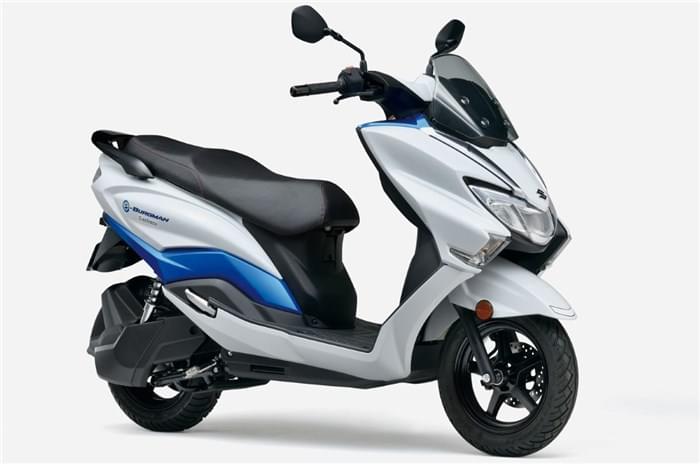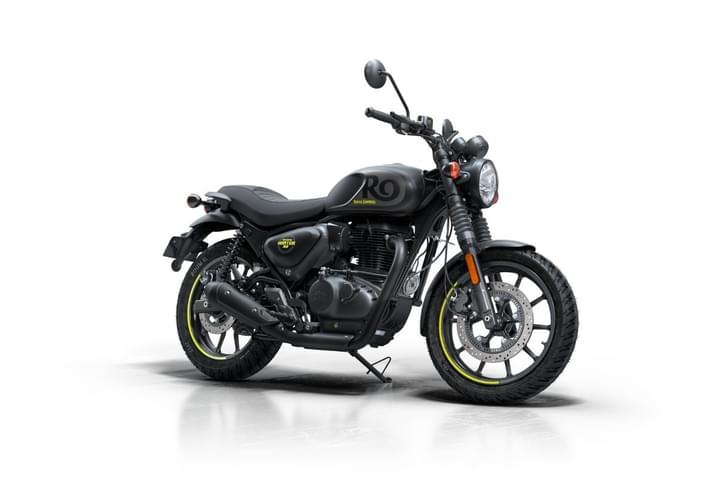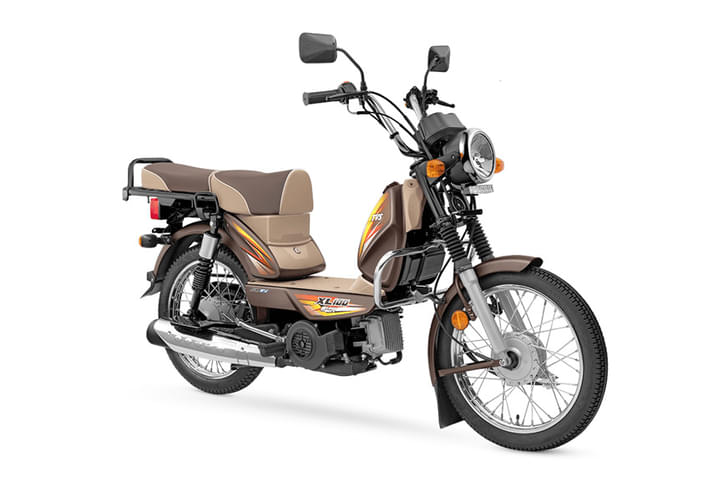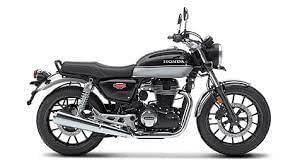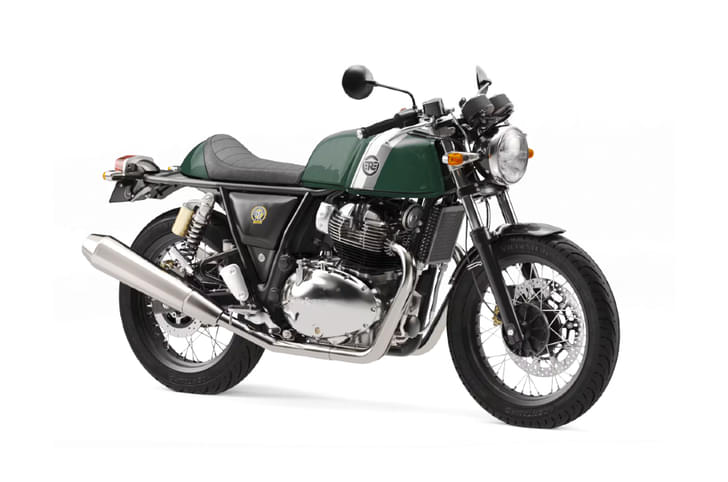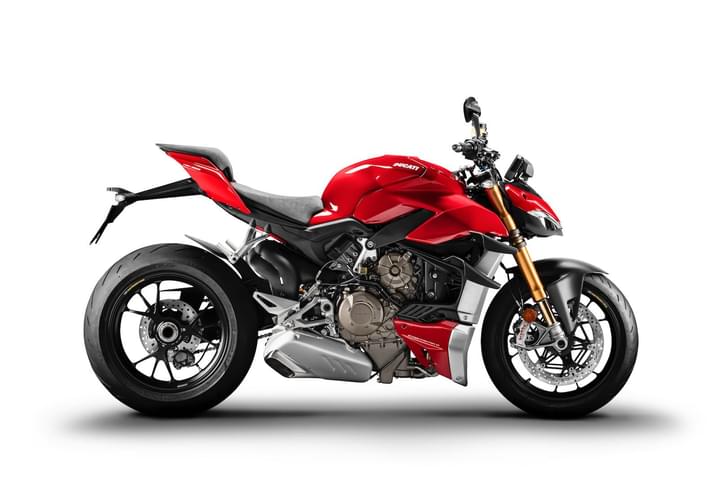Dreams are powerful things. Riding these two bikes transported me 15 years back to when I was an undergraduate college student supposedly studying business management but mostly just dreaming about motorcycles. Funny enough, I still have the very same motorcycle posters from my college days in my hometown bedroom cupboard and there were two that really captured my imagination. One was the mighty Yamaha R1, which symbolised the distant ‘someday’ dream, and right next to it was a magazine cut-out of the Yamaha R15, which had just gone on sale in India. That was the attainable one!
It took a few years, but the power of dreams ensured that my very first motorcycle in 2011 was, in fact, a Yamaha R15. I’m sure it’s a similar story for so many hundreds of thousands others – the numbers tell the story. In a market where sensible, cost-effective bikes reign supreme, Yamaha has managed to carve out a modern day icon with the R15. Now in its fourth generation, this is a tech-packed 150cc bike that pretty much costs Rs 2 lakh and still manages to sell about 10,000 units a month. It’s a success story like no other and it’s why the new Karzima was reborn in this form.
Karizma XMR vs Yamaha R15 V4: design
Both bikes are handsome, eye-catching things with their full fairings and sporty stances. The Karizma does look slightly larger, but the Yamaha packs a more special design, especially in this Metallic Grey scheme on the M model.
By housing its headlight inside its air intake, the R15 mimics the design language of Yamaha’s larger R series sportsbikes, and ends up with a modern, sporty and very Japanese-looking design. The layered side-fairing and the cut-outs in the tail section also add to the special feeling, and the quality levels are typical Yamaha, which is really quite good. All this combines to make the R15 feel like a rather premium looking and feeling machine, despite being just a 150.
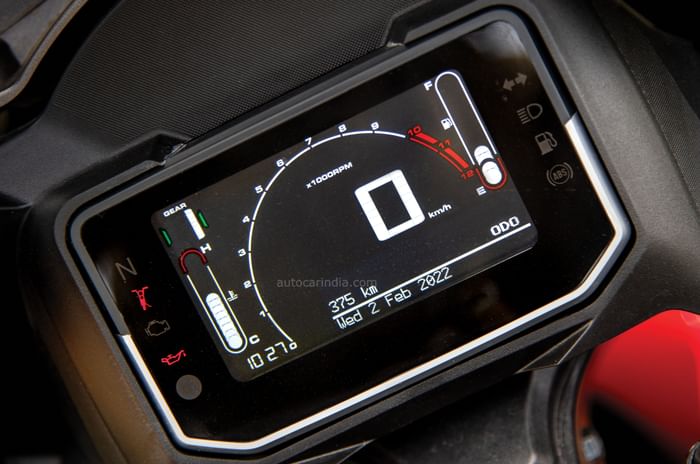
The Karizma is a handsome motorcycle in its own right, but doesn’t look quite as aggressive as the Yamaha. Its side fairings aren’t as expansive, and the tail section isn’t quite as sleek and detailed, although I think Hero has styled the tail-lamp very nicely. You can that it’s built to a cost when you notice things like the simple box-section swingarm and conventional telescopic fork – the R15 gets a nice-looking alloy swingarm and a USD fork. Even from just the view of the cockpit, Yamaha has paid attention to the smaller details like the blue colour M-branded fork tops where the Karizma uses very conventional looking stainless steel fork caps.
Both bikes give and take on the features front. The Yamaha is the only one to pack traction control and a quickshifter – and it’s a rather smooth and slick quickshifter, though it only works when shifting up. And even though this particular R 15 M is an older unit sporting an LCD, the latest R15 M now gets a colour TFT dash with Bluetooth connectivity. The rest of the R15 range gets the same LCD unit.

The Karizma also gets Bluetooth but only offers an LCD unit. It’s an informative unit, but the white on black layout is almost impossible to read when the sun is directly overhead. In terms of unique features, it offers an adjustable windscreen, but the adjustment mechanism on our bike was jammed in place, and even when it does move, the window of adjustment is limited, and the windscreen is quite low so the effectiveness is limited as well. One useful and valuable feature here is the automatic LED headlight that turns on and off according to ambient light. Overall though, the Karizma’s quality is not at the same level as the Yamaha, but it is amongst the best we’ve seen from Hero to date.
Karizma XMR vs Yamaha R15 V4: performance
When you’re talking about sportbikes, performance plays a larger role than normal and this is where the Karizma has a big upper hand. Not only does it have the 55cc advantage, but it uses that to make nearly 7hp more. The Karizma thoroughly outdoes the R15 not just in roll-on acceleration, but also beats it by over 2 seconds in the 0-100kph run. Interestingly, the longer-geared R15 actually shows you a slightly higher top speed – with both bikes being able to cross 140kph on the clocks.
This short-geared nature is quite similar to the KTM 200s and the Hero motor does remind of the KTM in other ways too. It’s a faster-revving engine than the R15 and it produces a more interesting sound as well. You’d have expected that with the bigger capacity, the Karizma would have the stronger mid-range, but this motor is quite peaky in nature. It feels rather flat (but still usable) below 6,000rpm before delivering an exciting surge of acceleration till about 9,000rpm.
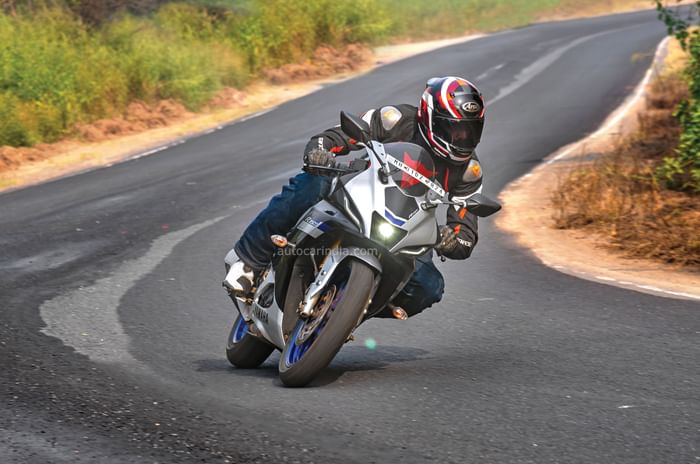
In comparison, the R15 makes the most of its variable valve timing system to deliver a much more linear powerband. Though this is still an engine that loves to be revved out, there isn’t a step-change in its power delivery like on the Hero.
Both engines are quite smooth for the most part, and only become slightly buzzy once you’re into the upper reaches of their tachometers. Despite this, both are good fun to rev out and you will only fully enjoy the experience if you are willing to frequently visit the redline.
That being said, Karizma pays the price for its larger engine when it comes to fuel efficiency, returning lower figures than the extremely efficient Yamaha. The Hero will give you about 35-40kpl in most situations, while the smaller, lighter R15 can go almost 10kpl higher. Both bikes have 11-litre tanks, but the R15 will take you much further on a tankful.
Karizma XMR vs Yamaha R15 V4: comfort
What sportbikes will give you in performance, they generally take away in terms of comfort. In this regard, the R15 has been readily getting more and more committed over the years. Today when I get on this motorcycle it’s generally accompanied by a groan and “What the hell are they thinking?” But I then remind myself of how 22-year-old motorcycling newbie me didn’t have a care in the world about an aching back and wrists because sitting this way just felt so damn cool. It’s impractical, it’s painful and on Mumbai’s awful roads it’s completely pointless, but I fully get why the R15’s young customer base accepts this with open arms.
The Karizma is much kinder in this regard. The riding position here is sporty too, but not quite as committed as on the Yamaha – there’s considerably less weight on your wrists and less strain on your neck and back. Despite this, it’s still a capable bike in the corners, but you definitely don’t feel as connected as you do on the R15. It feels a bit soft on the limit when pushed aggressively and it will grind its foot pegs a lot earlier. The Karizma also doesn’t handle mid-corner bumps as well, and can lose its composure a little over larger undulations.
Karizma XMR vs Yamaha R15 V4: ride and handling
Don’t get me wrong, the Karizma is a fun handler for sure, but these observations stand out in the company of the R15. First, there’s the huge, 21kg weight difference. At 141kg, the R15 feels so much lighter not only when you lift it off the stand but on the move too.
Show it a good set of roads and you’ll discover some of the sweetest handling dynamics in the market. If you’re someone who wishes to increase their riding skills, particularly at the race track, the R15 makes for a fantastic starting point. In fact, I’m fairly confident in saying that it could probably lap a race track quicker than the Karizma, partly thanks to the higher level of feel and feedback, but mostly because of the higher corner speeds that the R15’s extra cornering clearance allows.

Both bikes come on MRF tyres in similar sizes although the R15 gets a radial rear. Grip levels are good enough on both although neither has excellent brakes. That said, both stop well enough and both have dual channel ABS. Slip-assist clutches help both bikes smooth out aggressive downshifts and both manage to stop in about 17-18 metres from 60kph.
Where the Karizma isn’t quite as dynamically capable, it does offer the more forgiving and absorptive ride quality of this pair. The R15’s suspension has a well-judged setup that does a good job on smaller bumps and imperfections. Over the really rough stuff, though, you do get the sense that travel is limited, but the big pain point is in the riding position that amplifies the effect of every bump. In comparison, the Karizma is a lot more compliant and it transfers far less of a poor road’s effect to its rider.
Karizma XMR vs Yamaha R15 V4: verdict
Ultimately, in our time with both these bikes, the Karizma was the one we preferred to ride in most situations except for a smooth and winding road. It’s not only quicker, but also a whole lot more comfortable, and as far as life on the road goes, it simply offers a superior riding experience.
But it’s not that simple. The R15 has grown into something of a cult icon in India. Beyond its rather one dimensional skill set there is a sense of desirability in this motorcycle that you cannot ignore. Whether it’s the brilliantly executed looks or the thoroughbred lineage of the Yamaha brand and the R family of sportbikes, the Yamaha packs a desirability the XMR cannot match, even though Hero has resurrected an iconic name of its own to try and do so. If you dream of an R15 for these reasons, then it is the right bike for you.
But in nearly every other way, the Karizma comes across as the better everyday sportbike and the better overall package. It’s quicker, seats you more comfortably, offers a more forgiving ride, packs in a healthy features list, and does all this while managing to undercut the Yamaha on price. Which makes it the winner here.
